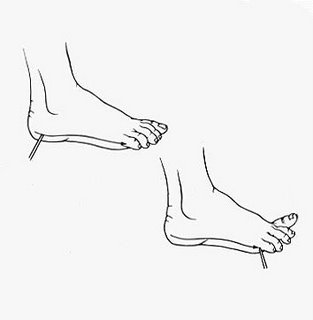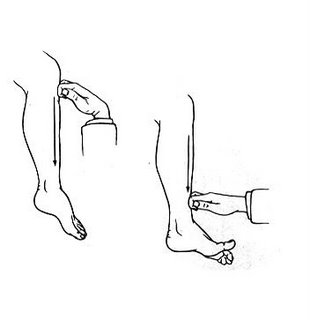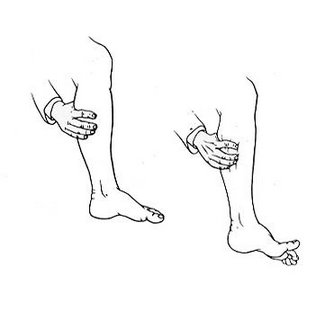Plantar Response
The testing of reflexes involving the lower extremities is a pivotal part of the neurological examination. Abnormal plantar response means extension of the great toe and fanning of other toes. It implies upper motor neuron dysfunction. There are several techniques to demonstrate this response.
Babinski: The sole of the foor is firmly stroked with orange stick (NOT tandem hammer!)
Chanddock: Stroke the side of the foot from external malleolus to the small toe with a orange stick. In a positive test, there is dorsiflexion of the great toe.

Oppenheim: Firmly press down on the shin and run down the thumb and the knuckles along the anterior medial tibial toward the foot. In a positive test, there is dorsiflexion of the great toe.

Gordon: Firmly squeeze the calf. In a positive test, there is dorsiflexion of the great toe.

Labels: Neurology









1 Comments:
how do you demonsterate plantar response in apatient with big toe
Post a Comment
<< Home